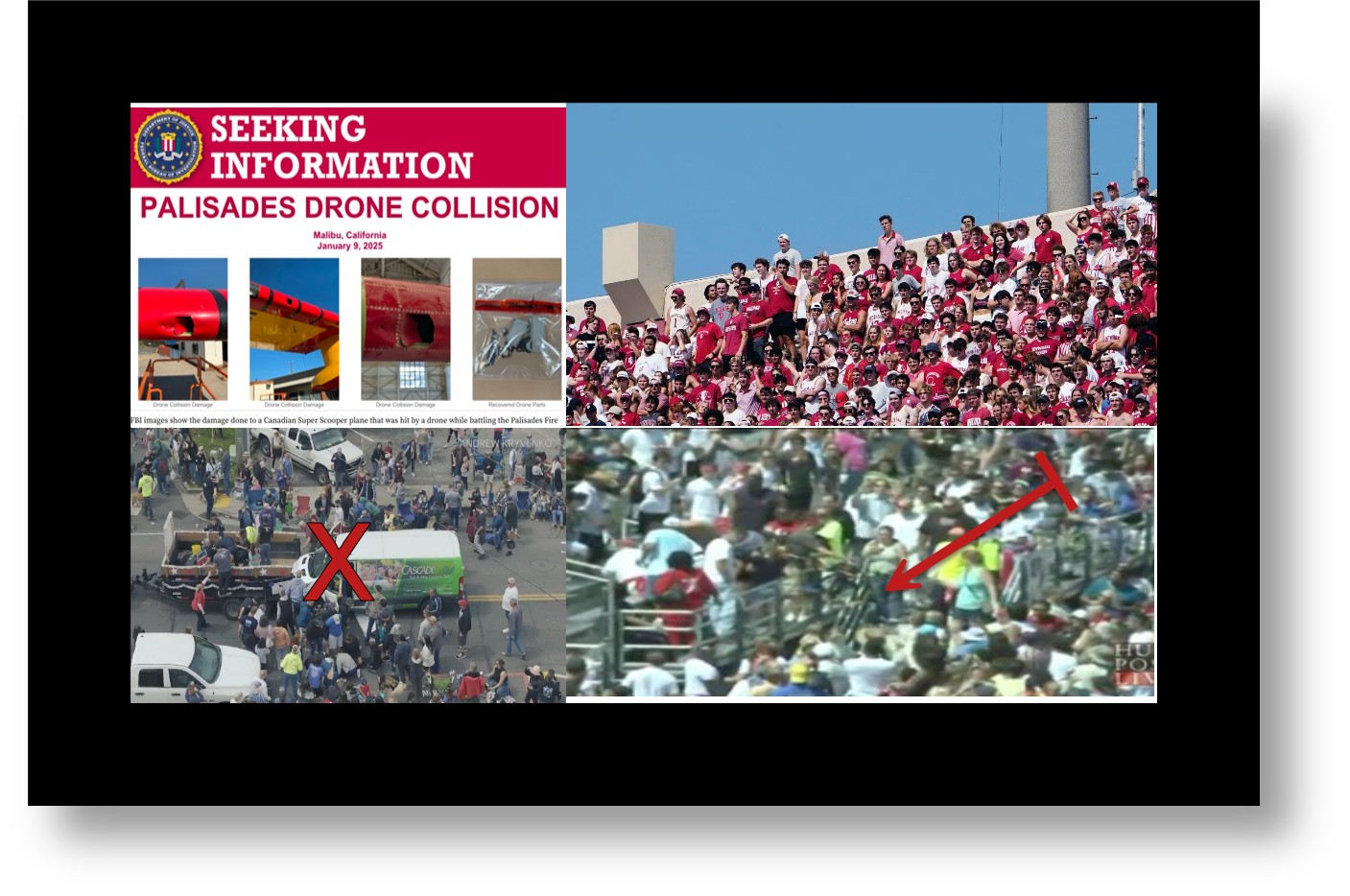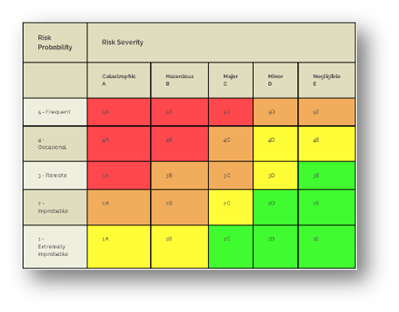UAS operations have well established Safety Risk Tools

A writer has described the paradox posed by UAS[1] vehicles—this aviation innovation both holds great promise in terms of positive service yet also holds the potential for harm. The depth of the downside is evidenced by the numbers he published:
- Injury Rates: Between 2015 and 2020, approximately 4,250 DRONE-RELATED INJURIES were treated in U.S. emergency departments. About 21% of injured individuals were under 18, and 84% were male.
- Accident Causes: In 2023, 65% of drone accidents were attributed to operator error, with 40% caused by loss of visual line of sight.
- Property Damage: In 2021, drone accidents resulted in over $2 million in global property damage.
- Near Misses with Aircraft: The FAA reported a 45% increase in drone incidents near airports between 2020 and 2022.
- Fatalities: While rare, drone crashes can be deadly. The FAA has documented cases of life-threatening injuries from drones falling on people.
His analysis tracks the risks posed by these operations as follows:
- mechanical failures,
- GPS errors,
- software glitches,
- cybersecurity threats
PLUS
- unexpected weather
- interference with other aerial vehicles
- unidentified telephone or other wires
- unintended or poorly planned collisions with structures
- failure to avoid restricted areas
- poor control of the UAS resulting in unstable flight or loss of lift
His solutions involve the application of more stringent regulations and of advanced technology development. While those suggestions may work, the immediate tools should address these risks. The primary analytical process is called AVIATION SAFETY RISK ASSESSMENT (SRA) and based on FAA and EASA guidance, here is a likely checklist:
- Define the Concept of Operations (ConOps)
- Mission purpose and scope
- Geographic location and airspace classification
- Type of UAS and operational limitations
- Visual Line of Sight (VLOS) vs. Beyond VLOS (BVLOS)
- Identify Hazards
- Environmental (e.g. weather, terrain)
- Technical (e.g. system failure, GPS loss)
- Human (e.g. operator error, fatigue)
- Operational (e.g. airspace intrusion, crowd proximity)
- Assess Ground Risk Class (GRC)
- Population density in operational area
- UAS weight and kinetic energy
- Crash scenarios and impact zones
- Mitigation measures (e.g. parachutes, geofencing)
- Assess Air Risk Class (ARC)
- Airspace type and traffic density
- Risk of collision with manned aircraft
- Detect-and-avoid capabilities
- Coordination with ATC if applicable
- Apply Mitigation Measures
- Technical: Redundant systems, flight termination
- Operational: Flight planning, pre-flight checks
- Human: Training, certification, crew coordination
- Environmental: Weather monitoring, time-of-day restrictions
- Use a Risk Matrix
- Severity (e.g. catastrophic, major, minor)
- Likelihood (e.g. frequent, occasional, rare)
- Assign risk levels and prioritize mitigations
- Define Operational Safety Objectives (OSOs)
- Maintenance protocols
- Emergency procedures
- Communication plans
- Compliance with regulatory standards
- Document and Review
- Create a Safety Risk Assessment Report
- Assign responsibilities and due dates
- Schedule periodic reviews and updates
PLUS
- Before all flights it is advisable to review the proposed operations in order to distinguish between low-risks and high-risks. A Flight Risk Assessment Tool (FRAT) is a review process which results in specific strategies for risk mitigation before the UAS is launched. The analytical regimen seeks to anticipate and design proactive solutions to identified hazards. Its steps are easy for the team to complete thoughtfully and thoroughly.. It serves as an essential aid in assisting pilots with informed go/no-go decisions and ought to be incorporated into every flight’s planning process.
SRA and FRAT are standard preconditions to obtaining Part 121 or 135 FAA authority. New applicants, as well as carriers which do not have these in place, must define and submit to a cohesive statement for approval. There are many off-the-shelf or one-size-fits-all versions, but the FAA Certificate Management Office will recognize that the draft does not adequately relate to the intended operations. It is wise to involve a person with a strong record[2] of helping formulate these elements of SAFETY CULTURE. That experience tends to focus the safety team on surveying all obvious and potential risks. Ultimately the establishment of SRA and FRAT must come from the executives, flight team and all involved from setting up the assignment to launch/land the mission.
The Promise and Potential Dangers of the Uncrewed Aviation Industry
Photo by SHOX art (Pexels)
Two headlines in the news this week were a stark reminder of where we are in terms of the full deployment of uncrewed aviation.
The first article read “Amazon Drone Crash Lands in Arizona Apartment Complex.” Thankfully, nobody was hurt but the drone was destroyed in a grassy area.
The second headline offered somewhat better news: “Florida Fisherman Saves Drowning Teenager with a Drone”
In just a few highlighted words, we have the story, and the prospective future of our industry, condensed perfectly. ON THE ONE HAND, THE POTENTIAL HARM TO PEOPLE ON THE GROUND; ON THE OTHER, THE AMAZING CAPACITY OF THESE FLYING MARVELS TO SAVE LIVES.
Let’s face it, drones have revolutionized emergency response, delivering vital medical supplies, aiding search-and-rescue missions, and even providing aerial support during natural disasters. But alongside these life-saving benefits, there’s a sobering reality—when drones malfunction or crash, they can pose serious risks to people on the ground and infrastructure.
Drones have rapidly evolved from hobbyist gadgets to essential tools for emergency response and healthcare. In remote areas, drones can deliver medical supplies like blood transfusions, vaccines, and even defibrillators—potentially making the difference between life and death. Similarly, drones equipped with thermal cameras aid search-and-rescue missions, detecting stranded hikers or survivors buried beneath rubble. Their ability to access hard-to-reach places makes them indispensable for humanitarian efforts.
Despite their immense potential, drones remain susceptible to mechanical failures, GPS errors, and software glitches. When operating near populated areas, a malfunctioning drone can plummet from the sky, endangering pedestrians, vehicles, and infrastructure. There have been documented cases of drones interfering with aircraft, leading to near misses and airport shutdowns. Additionally, the growing reliance on drones for critical operations raises concerns about cybersecurity threats—hackers could potentially take control of essential medical delivery drones or disrupt emergency services.
Until drones became a commercial reality and the Federal Aviation Administration (FAA) issued Part 107 in the summer of 2016, the threats to people on the ground were not a big part of the federal agency’s safety agenda. But now, with small drones as part of their mandate, this needs to change.
It is true that anything that flies have the potential to fall and damage or injure, but the reality of traditionally piloted aircraft is that this rarely happens and despite some recent headlines, the safety record of aviation is pretty good. Drone crashes are more common than many realize, and their consequences range from minor injuries to significant property damage. Here are some key statistics:
- Injury Rates: Between 2015 and 2020, approximately 4,250 DRONE-RELATED INJURIES were treated in U.S. emergency departments. About 21% of injured individuals were under 18, and 84% were male.
- Accident Causes: In 2023, 65% of drone accidents were attributed to operator error, with 40% caused by loss of visual line of sight.
- Property Damage: In 2021, drone accidents resulted in over $2 million in global property damage.
- Near Misses with Aircraft: The FAA reported a 45% increase in drone incidents near airports between 2020 and 2022.
- Fatalities: While rare, drone crashes can be deadly. The FAA has documented cases of life-threatening injuries from drones falling on people.
These numbers will inevitably change in the near future when thousands or hundreds of thousands of drones crisscrossing the sky making deliveries, helping first responders, conducting inspections, and, in general, contributing to the vitality of our society will be our reality. The increase in flights will predictably bring with it an increase in accidents and incidents involving people and property on the ground.
To fully harness the benefits of drones while minimizing risks, STRINGENT SAFETY PROTOCOLS MUST BE ENFORCED, such as parachutes and autorotation protocols used today in conventional helicopters. Advancements in autonomous AI-powered navigation and geofencing could further reduce incidents, ensuring drones operate within safe zones and away from restricted areas.
Perhaps the initial answer will be to use safe and uninhabited corridors, but one thing is almost certain: if the pioneers of our industry want to have agency in the future of the technology and the way it is deployed around the world, the same level of attention must be paid to safety as to other aspects of innovation perhaps more interesting or lucrative.
The uncrewed aviation industry holds immense promises for saving lives, but its risks must be mitigated through better regulations, technological improvements, and responsible usage. As we continue integrating drones into emergency response systems, delivery of small packages, infrastructure inspections, and many other sub-industries, proactive safety measures will be the key to preventing catastrophic failures while maximizing their life-saving potential.
[1] The term UAS will be used throughout this paper. The “U” once equaled unmanned then became uncrewed and recently returned to unmanned..
[2] JDA’s SafeAssure™ Safety Risk Assessment Program






